How I Maintain Fire Safe Properties in Prescott
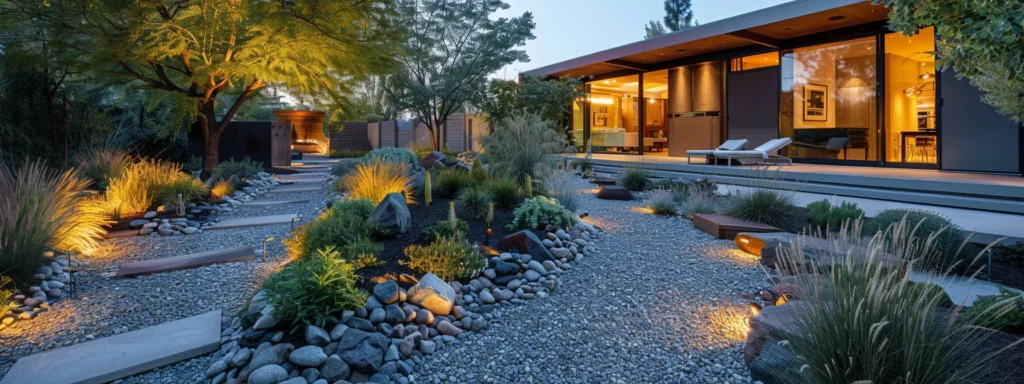
Table Of Contents:
- Firewise Landscaping Techniques for a Safer Prescott Home
- Understanding Firewise Landscaping Principles
- Creating a Fire-Resistant Landscape Around Your Home
- Maintenance Practices for Fire-Safe Properties
- Incorporating Firewise Features in Your Yard
- Community Resources for Firewise Landscaping
- Case Studies of Successful Firewise Landscapes
Firewise Landscaping Techniques for a Safer Prescott Home
Are you concerned about wildfires threatening your Prescott home? With the increasing risk of fires in our area, it’s essential to implement Firewise landscaping techniques to protect your property. In this post, we will explore key principles of Firewise landscaping, practical steps to create a fire-resistant yard, and maintenance practices to keep your landscape safe. By engaging with this content, you’ll learn how to reduce fire hazards, ensuring the safety of your home while enhancing its beauty. Let’s start creating a safer environment for your family and property.
Understanding Firewise Landscaping Principles
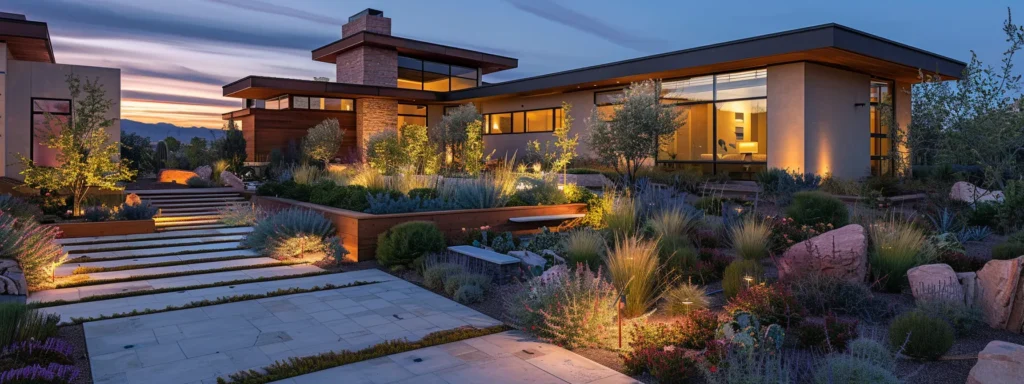
Firewise landscaping techniques focus on the restoration of vegetation around our Prescott homes to reduce fire damage risks. Implementing these principles provides numerous benefits, including enhanced safety and property value. Historically, Prescott has embraced Firewise practices and firewise initiatives, making our community safer. In the following sections, we will explore practical strategies and tools, including firewise measures prescott and essential systems like fire alarm systems and backflow prevention devices, to fortify our homes effectively.
Defining Firewise Landscaping Techniques
Firewise landscaping techniques involve strategic pruning and the careful selection of plant species to create defensible space around our homes. This practice aims to reduce the amount of combustible vegetation close to our structures, thereby minimizing fire risks. By understanding the significance of vegetation management, we can enhance fire protection services that bolster the safety of our Prescott homes.
Incorporating principles of Firewise landscaping into our outdoor spaces not only protects our properties but also promotes biodiversity. Simple actions, like maintaining a distance between plants and structures, can significantly improve our home’s resilience against wildfires. If you’re interested in learning more about Firewise landscaping and how it can benefit your property, don’t hesitate to contact us for expert advice and services tailored to your needs.
Benefits of Firewise Landscaping for Prescott Homes
Implementing Firewise landscaping brings significant advantages to Prescott homeowners by reducing wildfire risks. By creating a defensible space around our properties through strategic plant placement and maintenance, we can limit the chance of fire spreading to our homes. This proactive approach not only enhances our safety but can also contribute positively to the property values in our neighborhood.
Incorporating Firewise principles helps us create a safer environment by fostering better wildlife management and reducing potential fuel sources for fires. Our expertise includes integrating fire alarm monitoring systems as an essential measure to keep our homes protected. If you’re curious about how these techniques can directly benefit your property, reach out and learn more about us and our tailored solutions for reducing wildfire risk in northern Arizona.
Historical Context of Firewise Practices in Prescott
In Prescott, the historical context of Firewise practices underscores our commitment to fire prevention and community safety. Over the years, we have seen firsthand the devastating effects of wildfires in our area, prompting a collective effort to adopt strategies that mitigate risks associated with increased heat and dry conditions. Through local initiatives and educational programs, we’ve developed practices that emphasize responsible landscaping, helping residents understand the importance of managing vegetation around their homes.
As a landscape company deeply rooted in this community, we have collaborated with local organizations to promote Firewise principles that not only safeguard homes but also raise awareness about wildfire threats. By engaging with our neighbors and providing free quotes on landscaping modifications, we encourage proactive measures that enhance safety for all. If you want to learn more about effective strategies and how we can assist you, feel free to reach out or send us your email address for expert guidance tailored to your specific situation.
Creating a Fire-Resistant Landscape Around Your Home
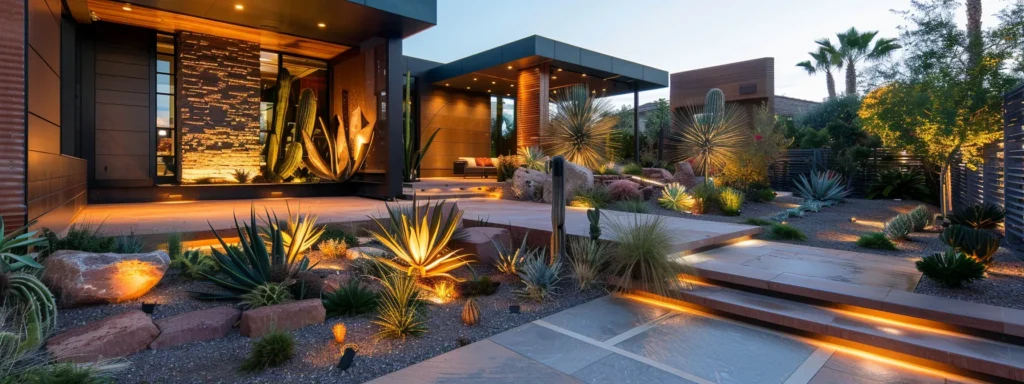
To create a fire-resistant landscape around your home, we must focus on selecting fire-resistant plant species, ensuring proper placement of vegetation, and designing effective defensible spaces. Incorporating hardscaping elements will further minimize fire risk. These strategies not only support fire damage restoration but also enhance overall safety and appeal. Let’s explore each topic to equip your property with optimal fire protection against wildfires.
Selecting Fire-Resistant Plant Species
Selecting fire-resistant plant species plays a crucial role in fire protection for our Prescott homes. Plants such as lavender, sage, and rockrose are excellent choices because they require less water and are less likely to ignite. By incorporating these species, we create a defensible space that minimizes fire risks while enhancing our landscaping‘s beauty. Consulting resources from the National Fire Protection Association can further guide us in choosing the right plants for our local conditions.
As someone with a background in firefighting, I understand the importance of proactive measures. Choosing fire-resistant plants can greatly reduce the need for fire extinguishers and other emergency measures around our properties. Creating a landscape that considers fire safety not only protects our homes but also helps foster a safer community as we all work together to minimize wildfire hazards.
Proper Placement of Vegetation
Proper placement of vegetation is a key aspect of creating a defensible space around our Prescott homes, significantly contributing to fire safety. When arranging our plants, I recommend maintaining a strategic distance between shrubs and structures to limit any potential fire spread. For instance, avoiding juniper close to our homes is essential, as its dense foliage can ignite easily. Instead, opting for plants with less volatile leaves can enhance our landscape‘s resilience against wildfires.
By thoughtfully considering the arrangement of our plants, we can effectively reduce the risk of fire-related damage. This practice not only protects our homes but also supports a healthier outdoor environment. I have seen firsthand how ensuring proper spacing and selecting the right plant species fosters a protective barrier that benefits the entire community. Together, we can create safer spaces that will withstand the challenges posed by wildfires.
Designing an Effective Defensible Space
Designing an effective defensible space around my Prescott home involves careful planning and consideration of various elements, such as the placement of fire sprinkler systems. I suggest creating zones with different levels of vegetation management. For example, keeping flammable materials and dense shrubs at least 30 feet away from structures, including the chimney and fireplace, significantly reduces fire hazards. This strategic layout ensures that there is less fuel for potential wildfires, creating a safer environment for my family and home.
By implementing firewise measures in Prescott, I have learned how to establish a protective barrier that not only enhances safety but also boosts property appeal. Providing excellent customer service during this process is crucial, as I guide homeowners through landscaping choices that prioritize fire resilience. By offering insights gained from my experience in the field, I help others understand how thoughtful design and maintenance can fortify their homes against wildfire risks, creating lasting benefits for our community.
Using Hardscaping to Minimize Fire Risk
Integrating hardscaping into my landscape design is an effective method to minimize fire risk around my Prescott home. By using materials like stone pathways, patios, and walls, I create barriers that slow down fire spread and reduce the presence of combustible materials close to structures. Additionally, installing proper irrigation systems ensures that my hardscaping areas remain lush and visually appealing while supporting a healthy landscape with minimal water use.
Incorporating features such as non-flammable materials around roofs and decks enhances overall safety and contributes to the beauty of my outdoor space. Backflow prevention devices help maintain the integrity of water supply systems, ensuring that irrigation remains efficient while contributing to fire-resistant landscaping practices. With these strategies, I create a harmonious environment that not only protects my home from wildfire threats but also enhances the aesthetic appeal of my property.
Maintenance Practices for Fire-Safe Properties

Regular pruning and debris removal are crucial for maintaining a fire-safe landscape around my home. I also implement mulching techniques to reduce hazardous materials that can ignite during a class B fire. To stay organized, I follow seasonal checklists to ensure my property remains protected. Each of these practices enhances safety while preserving the aesthetic of my hardscape, making my Prescott home less vulnerable to fire risks.
Regular Pruning and Debris Removal
Regular pruning and debris removal play a crucial role in maintaining a fire-safe landscape around my home. By removing dead branches, dry leaves, and other combustible materials, I significantly lower the risk of fire spreading to my property. As part of my firewise approach, I often refer to guidelines from the national fire protection associations, ensuring my practices align with expert recommendations that enhance safety and reduce fire hazards.
In my experience, my local fire department stresses the importance of keeping defensible space clear of flammable debris. This not only protects my home but also serves as reassurance for my neighbors. As a customer focused on fire safety, I prioritize regular maintenance, knowing that a proactive stance can make all the difference in case of an emergency. Through these practices, I create a safer environment for my family and community.
Implementing Mulching Techniques
Implementing mulching techniques is an essential practice for maintaining a fire-safe property in Prescott. By using organic materials like pine needles or wood chips, I can effectively suppress brush growth around my home, which minimizes potential fire fuel. Regular inspection of mulched areas helps ensure that they remain effective and don’t harbor any flammable debris, further enhancing my property‘s fire resilience.
In addition to its fire-preventing properties, mulch provides numerous benefits for my landscape. It retains moisture, reducing the need for frequent irrigation, which complements systems like fire sprinklers installed on my property. As I apply mulch strategically, I create a cleaner, safer environment that not only protects against wildfires but also supports the health and beauty of my landscaping.
Seasonal Checklists for Homeowners
As we progress through the seasons, I find it helpful to create a seasonal checklist to maintain a fire-safe property. During spring, I focus on inspecting my fire sprinkler system to ensure it operates correctly and is well-maintained. I also check for any accumulated debris, including leaves or twigs that may act as fuel during wildfire season. Maintaining my pavers and hardscaping areas is essential, as these elements can create barriers that protect against ember attacks.
In summer, I prioritize regular pruning to keep vegetation at a safe distance from my home, assessing any overgrown areas that may increase fire hazards. Fall is a great time for removing fallen branches and debris from my landscaping, which helps reduce the chance of ignition from embers. By adhering to these practices and maintaining an organized seasonal checklist, I create a safer environment for my family while contributing to our community’s overall fire resilience.
Incorporating Firewise Features in Your Yard
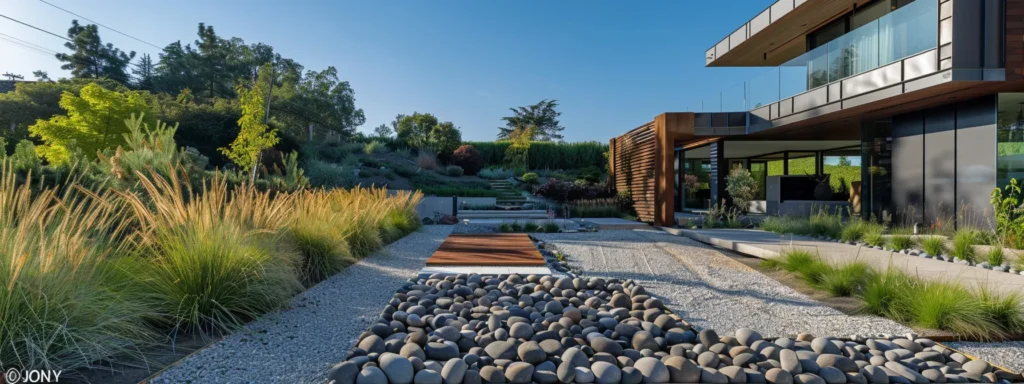
Building non-combustible zones around my home is essential for fire safety, as it creates barriers that can help stop fire spread. Installing firebreaks and barriers plays a crucial role by reducing ignition potential. I also utilize stone and gravel in my landscaping, which not only looks great but effectively minimizes fire risk. These strategies collectively enhance my home’s resilience against wildfires.
Building Non-Combustible Zones
Building non-combustible zones around my home is a critical strategy in creating fire-resistant landscapes that safeguard against wildfires. By using materials like gravel, stone, and concrete, I ensure that these areas serve as effective barriers, significantly reducing the chances of fire spreading to my property. Incorporating these elements not only enhances safety but also adds an attractive visual appeal to my yard.
In my landscaping projects, I focus on establishing clear firebreaks that separate flammable vegetation from my home. These zones can be strategically placed along pathways, at the base of walls, or around decks, effectively limiting ignition sources. By prioritizing the construction of non-combustible zones, I create a resilient environment that protects my property while providing valuable peace of mind for my family and neighbors.
Installing Firebreaks and Barriers
Installing firebreaks and barriers around my Prescott property is an essential part of creating a safe and fire-resistant landscape. I prioritize using materials such as gravel, stone, and concrete to construct these barriers, which help prevent the spread of fire by interrupting its potential fuel sources. By strategically placing these elements in my yard, I not only enhance the safety of my home but also achieve an aesthetically pleasing outdoor space.
As I design my firebreaks, I ensure they are located where they can effectively separate flammable vegetation from structures, such as pathways and around decks. This thoughtful placement limits ignition sources and provides peace of mind for my family and neighbors. By focusing on these strategies, I actively contribute to greater fire safety in our Prescott community while safeguarding my property from wildfires.
Utilizing Stone and Gravel in Landscaping
Utilizing stone and gravel in my landscaping is a smart approach for enhancing fire safety around my Prescott home. These materials create hardscaping elements that act as barriers, preventing the spread of fire by interrupting potential fuel sources. By incorporating stone walkways or gravel beds, I not only bolster my home’s wildfire resilience but also add a visually appealing touch to my outdoor space.
In my experience, using gravel around plant beds can significantly reduce the amount of combustible material close to structures. This method enhances the overall fire safety of my property while promoting better moisture retention in the soil. By integrating stone and gravel wisely, I create a practical and attractive landscape that fortifies my home against wildfire threats.
Community Resources for Firewise Landscaping

In Prescott, resources for enhancing fire safety through landscaping are readily available. The Prescott Fire Department offers Firewise Programs, which provide valuable guidance on creating defensible spaces. Local workshops and educational resources facilitate community engagement and knowledge sharing. Additionally, grants and financial assistance for fire mitigation can help homeowners implement these essential strategies, making our neighborhoods safer. Let’s explore each of these resources in more detail.
Prescott Fire Department Firewise Programs
The Prescott Fire Department offers valuable Firewise Programs aimed at helping residents create safer landscapes around their homes. These initiatives provide important guidance on identifying key risk factors and implementing effective landscaping strategies to minimize fire hazards. By participating in these programs, I have gained insight into the importance of defensible space, which significantly reduces the risk of wildfires threatening our properties.
Additionally, the Fire Department organizes community workshops that educate homeowners on practical techniques for Firewise landscaping. These engaging sessions emphasize hands-on learning and often include demonstrations of effective plant species and maintenance practices. By connecting with local experts and fellow residents, I’ve found it easier to apply these concepts in my yard, contributing to a more fire-resilient Prescott community.
Local Workshops and Educational Resources
Participating in local workshops and educational resources has enhanced my understanding of Firewise landscaping techniques. These hands-on sessions, organized by the Prescott Fire Department, offer practical insights on how to create defensible spaces and manage vegetation effectively. By engaging directly with local experts, I’ve learned valuable strategies that I can easily implement in my own yard, which reduces wildfire risks and contributes to community safety.
These workshops not only provide crucial information but also foster a sense of community among residents. I appreciate the collaborative atmosphere where we can share experiences and solutions tailored to the unique conditions of Prescott. By attending these educational events, I empower myself and my neighbors with the knowledge needed to maintain fire-safe landscapes that protect our homes while enhancing the overall beauty of our surroundings.
Grants and Financial Assistance for Fire Mitigation
In Prescott, there are various grants and financial assistance programs available to support homeowners in implementing fire mitigation measures. I’ve found that these resources can significantly ease the financial burden of making necessary changes to our landscapes for fire safety. Programs offered by local and state agencies often fund projects that include creating defensible spaces, using fire-resistant materials, and improving irrigation systems to enhance safety around our homes.
Applying for these grants not only empowers homeowners to invest in fire-wise landscaping but also strengthens our community’s resilience against wildfires. From my experience, engaging with local organizations that administer these funds can streamline the process and provide valuable insights on best practices for efficient use of resources. By taking advantage of available financial assistance, we can collectively work toward a safer Prescott, ensuring that our homes are better protected from fire threats.
Case Studies of Successful Firewise Landscapes
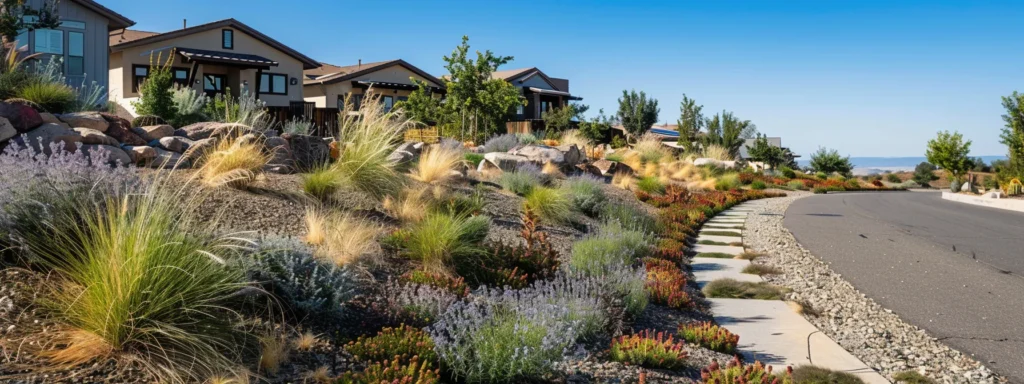
In Prescott neighborhoods, real-life examples demonstrate the effectiveness of Firewise landscaping practices. I’ve explored lessons learned from past wildfires, showcasing strategies that have successfully minimized damage. Community testimonials highlight the positive impact of these firewise techniques, reinforcing the importance of implementing proactive measures to enhance safety. Let’s look at each of these aspects to better understand how our community can benefit from Firewise approaches.
Real-Life Examples From Prescott Neighborhoods
In my work with clients across Prescott, I’ve seen how effective Firewise landscaping techniques have transformed properties and enhanced fire safety. For instance, in one neighborhood, homeowners collaborated to create defensible spaces by selecting non-combustible materials and strategically placing fire-resistant plants. This collective effort not only improved their fire safety but also elevated property values, showcasing the power of community engagement in fire prevention.
Another example comes from a family who implemented a well-thought-out irrigation system and maintained a clear buffer zone around their home. With carefully placed firebreaks and the elimination of combustible debris, they greatly reduced the risks of fire spreading to their property during the wildfire season. These real-life applications illustrate how you can take proactive steps to protect your home and contribute to a safer Prescott community.
Lessons Learned From Past Wildfires
From my experience and the insights gathered after previous wildfire incidents, I have recognized the critical role of maintaining a defensible space around homes. Many properties that faced severe damage lacked proper vegetation management, indicating that strategic plant placement and removal of combustible materials can greatly reduce fire risks. Observing these events has reinforced the importance of educating homeowners about the necessity of periodic inspections and ongoing maintenance to ensure their landscapes remain fire resilient.
Moreover, I’ve seen firsthand how community collaboration can enhance fire safety. In several neighborhoods, residents came together to implement Firewise landscaping practices, which resulted in reduced fire spread during intense wildfire events. These real-life examples clearly illustrate the success of collective efforts to maintain fire-safe properties, reminding us all to consider our surroundings and actively participate in community initiatives aimed at protecting our Prescott homes from future wildfire threats.
Community Testimonials on Firewise Practices
In my interactions with residents across Prescott, I have collected several testimonials highlighting the effectiveness of Firewise landscaping practices. One neighbor shared how implementing a well-planned defensible space not only protected their home from wildfire risk but also encouraged others in the community to take similar steps. This collective effort has fostered a safer environment for everyone, reinforcing the value of shared responsibility in fire prevention.
Another community member recounted their experience of choosing fire-resistant plants and applying effective maintenance techniques. They noted significant peace of mind knowing their property is better safeguarded against potential wildfires. Their story exemplifies how the right landscaping choices lead to tangible benefits, showing that when we prioritize fire safety, we enhance our overall quality of life in Prescott.
